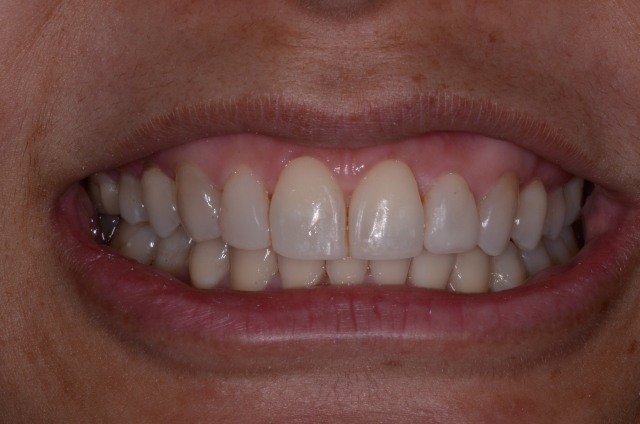In a previous article, I discussed some options for no-prep restorations and noted how peg laterals are great examples of an instance where you can do this as long as you have enough space and the teeth happen to be in the right position.
Of course, as I am sure you know, this almost never happens, which forces you to utilize orthodontics to make it so. In this article, I will review why it is critical, at least in my opinion, to restore teeth to their desired final size during orthodontic treatment, rather than after the orthodontic treatment is complete.
If you think about it, when teeth are undersized, peg laterals and worn teeth are great examples. The plan is to make them bigger and bring them back to their normal size. It is not realistic to expect our orthodontists to visualize the end size, then move the undersized tooth into the ideal position and hold it there so you can restore it.
If you are thinking “well that’s ok - if I look, I (as the restorative dentist) will know if it’s in the right spot.” I am telling you that you will probably be wrong (I know from my own experience), and if you happen to get lucky, asking your orthodontist to hold it there for you is just not predictable.
So how do you make undersized teeth and orthodontic treatment predictable? The answer is simple - you restore (at least in a transitional nature) the teeth to the desired final size during orthodontic treatment.
Let’s look at a case. This is where we started:

Then, once the orthodontist was ready for me to bond and resize the teeth, I saw the patient and did just that, as you see here:

It is important to note that, personally, I like to see the patient for an additional appointment prior to the actual bonding appointment so I can complete a wax-up and then make matrices to aid in my composite bonding as discussed in a previous article.
The most important thing to remember when having a wax-up done mid-ortho is that you need to wax it up for proper size and shape independent of tooth position and alignment. This is due to the fact that the position and alignment will be corrected and finalized by the orthodontist. As you can see here, the teeth are the right size and shape, but our alignment and position are still off.

As a warning (and don’t forget to warn your patient!), things will almost always look WAY worse immediately after your bonding mid-ortho. This case looked better than the typical case where we do this. The key is to trust the process. No, it does not look great immediately post-bonding, mid-ortho; but it will look great once the orthodontist is done, as you can see here:

Yes, this is same patient with the same bonding that was done mid-ortho. Is this a bunch of work? Of course it is, but I think you will agree that it looks a lot better than this:

This is a case in which the bonding was done after the orthodontics was done rather than during the orthodontics - at least, that’s what the patient told me when she presented wanting new restorations on 7 and 10. As you can see, these cases are somewhat similar in how they started, but the results were way different and while we have no way to know for sure how the latter case could have turned out, had the bonding been done mid-ortho, my guess is that they would have had a better shot at a more ideal outcome.
(Click this link for more dentistry articles by Dr. John Carson.)
John R. Carson, D.D.S., P.C., Spear Visiting Faculty and Contributing Author - www.johncarsondds.com